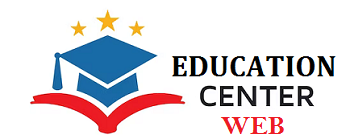Imagine a classroom where students are not only learning but actively engaging, supporting, and helping each other to improve. Peer feedback can transform your classroom into a collaborative, dynamic, and enriching learning environment. It’s all about empowering students to take charge of their learning journey while enhancing their critical thinking and communication skills.
In this blog post, we’ll dive into fantastic peer feedback strategies that can elevate your teaching methods and significantly boost student engagement.
Whether it’s fostering trust, setting clear structures, or encouraging constructive feedback, these techniques are sure to enrich the educational experience for everyone involved.
Importance of Trust in Peer Feedback
Establishing trust is the cornerstone of effective peer feedback. Without trust, feedback can easily be misinterpreted, leading to ineffective communication and missed opportunities for growth. It’s essential to create an environment where students feel safe and confident in sharing their honest thoughts.
One way to foster this trust is through team-building activities and open discussions about the value of feedback. Teachers can also use surveys to gauge the level of trust within groups, asking questions like, “On a scale of 1-5, how well does your group trust each other?” By understanding the dynamics of trust, teachers can better support their students in the feedback process.
Differentiating Between Critical Feedback and Insults
Teaching students to distinguish between constructive criticism and insults is crucial in nurturing a respectful learning environment. Students often hesitate to provide critical feedback due to fear of offending their peers. Creating a feedback framework helps alleviate this concern.
For instance, developing a continuum of feedback ranging from constructive criticism to affirmations can help students understand the intention behind their words. A structured approach like this ensures that feedback remains beneficial and supportive, emphasizing that criticism aims to foster growth rather than harm.
Structuring the Peer Feedback Process
Let’s get to know how you can structure the peer feedback process:
20-Minute Feedback System
The 20-Minute Feedback System is a quick yet effective way to facilitate student discussions. Begin by pairing students and having one share their work or an idea while the other listens attentively. Afterward, switch roles. This structure encourages active listening and thoughtful feedback within a limited timeframe, promoting productive dialogue without overwhelming students.
Utilizing Sentence Stems
Providing students with sentence stems is a powerful tool to guide their feedback and ensure clarity. Phrases like “I noticed that…” or “Have you thought about…” can help structure responses, ensuring comments are specific and actionable. This approach not only helps students articulate their thoughts better but also prevents feedback from veering into vague or overly harsh territory.
Implementing a Feedback Carousel
The Feedback Carousel is an engaging method that involves students moving around the classroom, leaving sticky-note feedback on each other’s projects. This strategy enables anonymity in feedback, reducing student anxiety about giving or receiving honest critiques. It also allows learners to gather a range of perspectives, thus enriching their revision process with diverse insights. This dynamic and interactive approach keeps the feedback process fresh and engaging for everyone involved.
Clarifying the Purpose of Feedback
Understanding the goal of peer feedback begins with determining what kind of feedback students are giving and receiving. Feedback can target the process or the product. Process feedback focuses on how students approach their work, such as their methods, thought processes, or strategies.
On the other hand, product feedback centers around the final results or outcomes of their work. In a writing assignment, for example, process feedback might address an approach to drafting, while product feedback evaluates the clarity and coherence of the final piece. By clarifying whether the focus is on the process or the product, students can tailor their observations and suggestions more effectively.
Setting Key Focus Areas
To make feedback effective, it’s important to establish key focus areas. This involves honing in on specific elements of the work that need attention. For instance, in a writing exercise, students might concentrate on word choice or structure. In a STEM project, the focus could be on the accuracy of data or the creativity of the solutions proposed. Clearly identifying these areas helps students know what to look for and alleviates the potential overwhelm of scanning an entire piece of work aimlessly.
Utilizing Feedback Effectively
Once feedback is given, it’s vital to ensure that it is utilized fully. Students should understand not only how their peers perceive their work but also how to apply the suggestions they receive. Encourage students to ask themselves questions like, “How can I use this feedback to improve my next draft?” Creating an iterative process out of receiving and applying feedback turns it from a one-time event into a continual learning experience, fostering growth and development.
The Role of the Teacher in Peer Feedback
Teachers play a crucial role in orchestrating an effective peer feedback environment. It’s essential for them to establish a supportive structure and clear expectations for feedback. This begins with avoiding peer grading, as it can disrupt the focus of peer feedback by introducing unnecessary power dynamics and emphasizing grades over learning. Students should focus on the quality of feedback and not on assigning scores to each other.
-
Avoiding Peer Grading
One crucial guideline in facilitating peer feedback is to steer clear of students grading one another. The dynamic of students grading peers can create a competitive atmosphere instead of a collaborative one. It shifts focus from meaningful feedback to simply achieving a grade, and this shift detracts from the primary aim of feedback to enhance learning and comprehension. By maintaining the feedback environment as a space for growth and constructive criticism, teachers can promote a positive and engaging atmosphere.
-
Providing Revision Time
Incorporating revision time into the lesson plan allows students the chance to take the feedback they’ve received and apply it meaningfully. Teachers should allocate specific periods where students can refine their work based on the comments from their peers. This practice ensures that feedback is not just theoretically noted but used in practical ways to enhance learning outcomes. It reflects a shift from prioritizing correctness at first try to valuing the learning journey, where revisions are an integral part of the educational process.
-
Setting Parameters and Expectations
Teachers must establish clear parameters and expectations for how feedback sessions are conducted. This includes communicating the norms such as respectful language, focused participation, and active listening.
It’s helpful to develop these norms collaboratively with students to ensure buy-in and understanding. Specific expectations, like how to phrase feedback positively (“I noticed…” or “Could you elaborate on…?”), provide students with a framework to deliver suggestions constructively, ultimately creating a safe and productive environment for peer feedback.
Modeling and Practicing Feedback Techniques
Modeling and practicing feedback techniques are crucial steps in ensuring students grasp how to provide and accept constructive peer feedback effectively. When you first introduce peer feedback in the classroom, students might feel uncertain or even shy. They may give excessively positive or overly harsh feedback because they aren’t sure what to do. This is where modeling comes into play!
Begin by demonstrating what high-quality feedback looks like. Engage a confident student in a role-play session where they give feedback on a piece of work, and narrate each part of the process. For instance, you might use specific sentence stems, such as “I noticed that you ” or “One improvement could be,” which facilitate more precise and helpful feedback. By showcasing how to structure a feedback session, you’ll provide students with a solid framework to emulate.
Practicing these techniques is equally vital. Break down the feedback process into steps and give students the opportunity to practice each step progressively. For instance, spend one lesson focusing solely on identifying strengths in a peer’s work, then in the next class, focus on suggesting areas for improvement. By gradually building these skills, students will internalize effective feedback protocols that become second nature over time.
Key Steps for Effective Modeling and Practice:
- Demonstrate the Process: Use examples and role-playing to showcase what successful feedback looks like.
- Use Tools: Incorporate visuals like PowerPoint slides or anchor charts to guide students.
- Step-by-Step Practice: Allow students to focus on one aspect of feedback at a time to master it before moving on.
- Set Parameters: Clearly define what constitutes constructive feedback to cultivate a respectful and productive environment.
- Encourage Role Reversals: Let students switch roles of feedback giver and receiver to understand both perspectives.
With consistent practice, students will not only engage in meaningful feedback exchanges but will also enhance their communication skills, bolstering their overall learning experience.
Final Thoughts
Implementing peer feedback in your classroom can revolutionize the way students learn and engage with each other. By fostering an environment of trust, structuring the feedback process, and clarifying the purpose of feedback, students can provide and receive meaningful insights that contribute to their growth.
Remember to set clear expectations and to practice these strategies continuously. This will help students refine their communication skills and ability to critically assess work. So, empower your students with these feedback strategies by pursuing courses like the Professional Doctorate in Education, and watch them transform into active, engaged learners!

